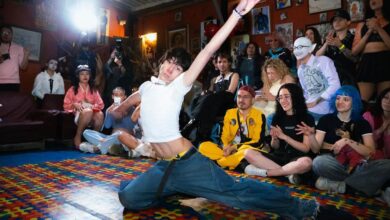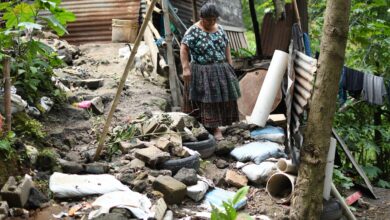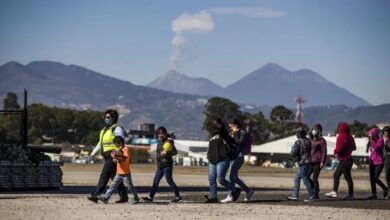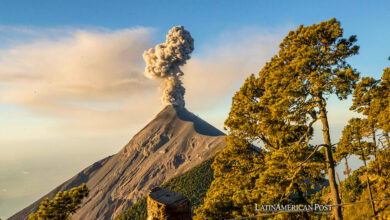Guatemala Learns to Dance with Death, Memory, And Unfinished Histories
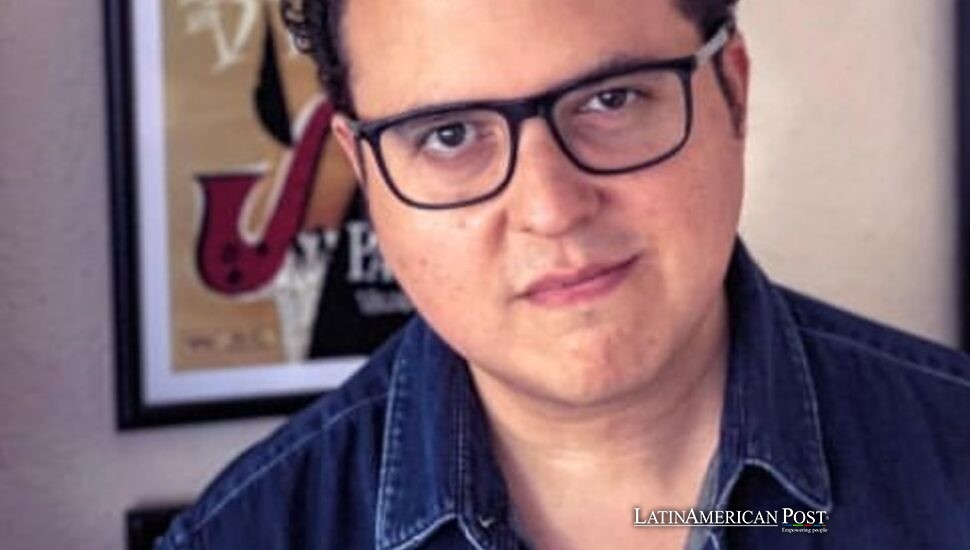
In three long, haunting stories, Guatemalan writer Arnoldo Gálvez Suárez turns death from a doom into a reckoning. As he told BBC Mundo, pandemic solitude, Mesoamerican cosmovisions, and Guatemala’s unresolved past braided into a book that asks us to live toward the end.
Dancing With Death, Refusing Despair
How do you befriend the thing that ends you? How do you sit beside another person’s dying without turning away? In Alguien bailará con nuestras momias, Arnoldo Gálvez Suárez answers with a quiet audacity: you don’t defeat death; you choreograph around it. The triptych—”La era glacial,” “Para eso están los amigos,” and “Todo lo que no se sabe”—was written “almost simultaneously,” he told BBC Mundo, during a pandemic hush that made every clock feel louder. The mood is melancholic, but it refuses the grand, romantic gloom that so often swallows elegy.
“Very soon I realized the book also responded to the old relationship of Mesoamerican cultures with death,” he said to BBC Mundo, contrasting that horizon with a Western fixation on annihilation. What emerges is not death as spectacle, but what he calls “una muerte discreta,” a discreet death—ordinary, intimate, accepted with a paradoxical “gozosa resignación,” a joyful resignation.
Even the title insists on that embrace. Someone will dance with our mummies. The friction of words—dance and mummy—declares the point: celebration beside mortality, not denial against it. The stories refuse the impossible task of conquering the end and ask the liveable one: how do we walk toward it without lies? In “La era glacial,” two men long past the middle distance share a last meeting, both gravely ill, one cancer-ravaged and calm about the only choice he believes remains. The scene is plain and devastating.
He speaks about agency as if it were a final gift—whether a life lived on one’s own terms might include choosing the terms of one’s dying. Gálvez Suárez does not sermonize; he listens. “In this case, it seemed inevitable to agree with him,” he told BBC Mundo, framing consent inside suffering that has made life unbearable. In the same breath, a line that is almost a benediction: there is no shame in growing old. He admits he repeats it to himself. Behind the billion-dollar war against aging, he suggests, crouches a much older terror. “Behind our war against aging is the fear of death,” he told BBC Mundo, “and that fear sits beneath many of humanity’s great undertakings.”
Memory, too, is an ethic here. His protagonists worry less about fame than about residue. What remains of me? A celebrated singer-songwriter in “La era glacial” hopes his songs outlive him, a little raft for the living. The man seated beside him—a figure from the more complex strata of power—has already made peace with leaving “a trail of death, violence, and suffering,” as Gálvez Suárez put it to BBC Mundo. The pairing is bracingly honest: one legacy console, one haunt. Both are answers to the same questions murmured at hospital windows and kitchen tables: Did my life matter? Did I fulfill a purpose? What endures when I’m gone?
A Singer’s Murder and a Country’s Public Shame
The singer in those pages has a seed in a morning that Guatemala has not forgotten. In 2011, Argentine troubadour Facundo Cabral was gunned down in Guatemala City—an assassination that investigators later traced to a turf vendetta aimed at the businessman traveling with him. Yet the shock was larger than the fact pattern. “It was the culmination of a period of absolutely exacerbated violence,” Gálvez Suárez told BBC Mundo, a rupture in a long, brittle “mafia peace.”
That day, in front of a fire station where Cabral’s body lay, he watched crowds arrive with a single, unusual emotion in public life: shame. “I had never witnessed a public manifestation of shame and guilt like that,” he told BBC Mundo. Strangers apologized to Argentina, to Latin America, to the cultural world—as if the city itself had failed a guest at its table.
From that street, he began imagining another stage. In the fiction, Cabral becomes Santiago Arrabal, an Argentine legend on a farewell tour who collides with a man from his own past—a friend whose path curved into organized crime. The real is sublimated; the grief is not. The encounter lets the novelist do what tribunals and headlines cannot: sit two histories together and let them struggle to breathe in the same room.
The question isn’t whether art can heal violence—it cannot—but whether art can hold it long enough for meaning to form around the damage. In Gálvez Suárez’s hands, the scene is less an answer than a vigil: what does it mean to meet the past in the present tense, and what can song do when the air itself is bruised?
Class, Color, and Who Inherits Power
If death is the gravity of Alguien bailará con nuestras momias, class and race are its prevailing winds. “Para eso están los amigos” hums with the bass note of narcotrafficking. Still, the melody is intimacy twisted by inequality—how surnames, fortunes, and in Guatemala, phenotypes, choreograph the room before any words are said. “That is true in many places,” he told BBC Mundo, “but above all in Guatemala,” where the dominant classes descend from colonial privilege and have refined their grip for centuries.
Racism, he argues, became an ideological pillar: the story that made fortunes feel natural and networks feel ordained. Even as new money and new power centers contest the old order, “the structure is more or less the same,” he told BBC Mundo, and society continues to associate certain faces, certain bodies, with authority and cash.
What breaks it? He does not pretend to have a formula. He points, instead, to forty years in which pueblos originarios organized, resisted, and argued their way into the national conversation with a patience that is its own kind of genius. Progress is real; the mountain is high. For anyone raised in the cushion of class, awakening can be violent.
He remembers the moment without embroidery: he was fourteen when the 1996 Peace Accords were signed, and he suddenly understood, as he told BBC Mundo, “the horrors of the war.” That shock is a small theory of history: private ignorance breaking against public truth. Behaviors that begin as personal—who you befriend, how you speak to a server—reveal themselves as sociopolitical echoes, the long aftersound of political violence.
He returns, again and again, to 2013, when Guatemala did something almost no nation does: it prosecuted Efraín Ríos Montt for genocide in its own courts. For a moment, the past stood upright in a courtroom. And then the Constitutional Court reversed the verdict. The rupture exposed a national split-screen: even with victims testifying, many preferred denial. “This inability to accept the horrors of the past, and its consequences, has become essential to my literary interests,” he told BBC Mundo. His 2015 novel Puente adentro translated that blindness into a family: a son straining to understand his father’s 1989 murder—another secret that curdled into silence at home.
Family Silences, National Trauma, and the Work of Memory
Politics in these stories often arrives through the kitchen door. Siblings quarrel over exhumations. Old friends remember the same night and argue over what it made of them. Children press against the wall of what their elders will say. “Conversations between siblings are very revealing,” he told BBC Mundo.
Two people share a childhood, agree on the facts; their interpretations—the emotional physics of those facts—diverge until they feel like different histories altogether. That double vision is more than a motif; it’s a model for Guatemala, where truth commissions, courtrooms, and plazas provide a common stage but not yet a familiar story.
“Todo lo que no se sabe,” the final, brutal jewel of the triptych, burrows into that hush. Two brothers reunite to move their mother’s remains so she will not share a niche with the man who abused her, drank, and fathered them both. The plot is procedural—permits, niches, a date at the cemetery—but the heat is in what they cannot say. Their omissions are an anatomy lesson in how violence nests in a family and passes as a taboo—how a nation’s refusal to name the wound becomes a household’s refusal to pronounce the bruise.
Since the Peace Accords, he told BBC Mundo, Guatemala has changed the way it talks about its past, though “it has not been enough.” He calls the genocide trial the country’s most significant milestone so far: a moment when the mirror did not blink. But he fears the reflex that comes after—the urge to “turn the page,” to confuse time with healing. Unresolved trauma does not fade; it ferments. “It could be a hundred years,” he told BBC Mundo, “and it will still be operating.”
Across Alguien bailará con nuestras momias, form follows that truth. The prose resists thesis and prefers encounter—rooms where characters must choose how to live with what has already happened, to them and to others. There is mournful tenderness in the sick friends’ argument over agency and dignity in “La era glacial,” hard clarity in the way privilege coats every exchange in “Para eso están los amigos,” and a tremor of recognition in the brothers’ painstaking logistics in “Todo lo que no se sabe.” Death is a catalyst, not a conclusion. The question is not whether we will die. It is who we become once we stop pretending we have all the time in the world.
That is why the title lands like a bell. To dance with our mummies is to admit a thread between private grief and public history; it is to remember as an ethics, not just a sentiment. In a country where the past returns as often as rain, Gálvez Suárez is not prescribing reconciliation; he is setting the floor. As he told BBC Mundo, Mesoamerican cosmovisions, pandemic writing, and Guatemala’s unfinished reckonings braided into these pages. The steps are not easy, but they are shared: a hand extended, a turn, a pause.
Also Read: In a Colombian Cemetery, Former Enemies Unearth the Bones of Peace
The dance is not victory over death; it is fidelity to the living. And in Guatemala, where ghosts sit near the doorway, it is a way to say: we see you, we remember, and we will not pretend otherwise.

